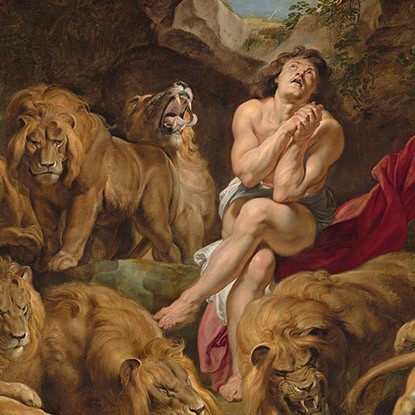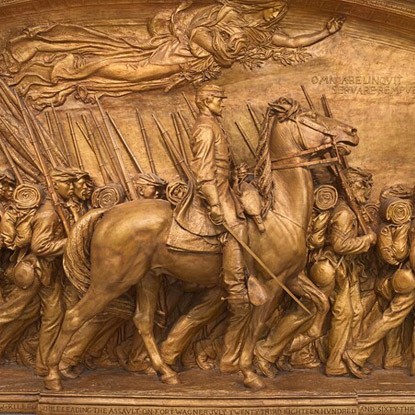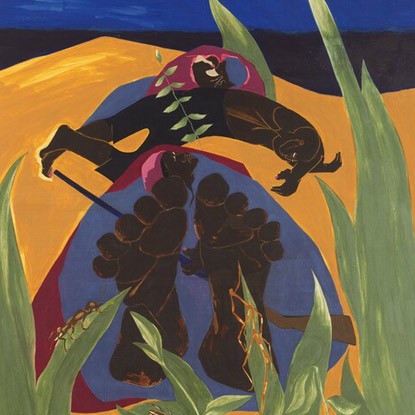Fra Angelico and Fra Filippo Lippi
c. 1395–1455 (Fra Angelico) and c. 1406–1469 (Fra Filippo Lippi)
Italian
Download PDF (11MB)
Telling Stories
Artists often tell stories through pictures. The artists in this chapter selected stories from religious, mythological, and historical sources, as well as tales from their imaginations.
Fra Angelico and Fra Filippo Lippi envisioned an important event from the Bible. Rogier van der Weyden and Raphael painted their interpretations of the story of Saint George. Peter Paul Rubens chose to show climactic moments from biblical and mythological stories. John Singleton Copley depicted a real-life event with great suspense, while Claude-Joseph Vernet painted imaginary adventures. Augustus Saint-Gaudens and Jacob Lawrence honored heroes of the Civil War era.
As you compare the artists in this chapter, think about what choices artists make when depicting a story and what elements of art contribute to telling it.
Rogier van der Weyden and Raphael
c. 1399/1400–1464 (van der Weyden); 1483–1520 (Raphael)
British (van der Weyden); Italian (Raphael)
Download PDF (13MB)
Peter Paul Rubens
1557–1640
Flemish
Download PDF (9MB)
John Singleton Copley and Claude-Joseph Vernet
1738–1815 (Copley); 1714–1789 (Vernet)
American (Copley); French (Vernet)
Download PDF (8MB)
Augustus Saint-Gaudens
1848–1907
American
Download PDF (9MB)
Jacob Lawrence
1917–2000
American
Download PDF (8MB)
Paperback editions of An Eye for Art are available for purchase.
Download PDFs:
John Constable (6.6MB)
Martin Johnson Heade and John James Audubon (7.2MB)
Claude Monet (14.9MB)
Georgia O'Keeffe (10.9MB)
Andy Goldsworthy (6MB)
Download PDFs:
Rembrandt van Rijn (10MB)
Canaletto and Giovanni Paolo Panini (11MB)
Jasper Francis Cropsey (12MB)
Thomas Moran and George Catlin (11MB)
Henri Matisse and André Derain (11MB)
George Bellows (14MB)
Download PDFs:
Leonardo da Vinci (11MB)
Élisabeth-Louise Vigée Le Brun and Jacques-Louis David (8MB)
Vincent van Gogh and Paul Gauguin (14MB)
Chuck Close (7MB)
Download PDFs:
Fra Angelico and Fra Filippo Lippi (11MB)
Rogier van der Weyden and Raphael (13MB)
Peter Paul Rubens (9MB)
John Singleton Copley and Claude-Joseph Vernet (8MB)
Augustus Saint-Gaudens (9MB)
Jacob Lawrence (8MB)
Download PDFs:
Jan Steen and Hendrick Avercamp (14MB)
Osias Beert the Elder, Willem Claesz Heda, and Jan Davidsz de Heem (15MB)
Édouard Manet (10MB)
Mary Cassatt (11MB)
Winslow Homer (12MB)
Wayne Thiebaud (7MB)
Download PDFs:
Giuseppe Arcimboldo (12MB)
Johannes Vermeer (8MB)
Joseph Mallord William Turner (7MB)
Pablo Picasso (11MB)
Joan Miró (14MB)
Diego Rivera (11MB)
Romare Bearden (9MB)
Jackson Pollock (19MB)
Roy Lichtenstein (8MB)






